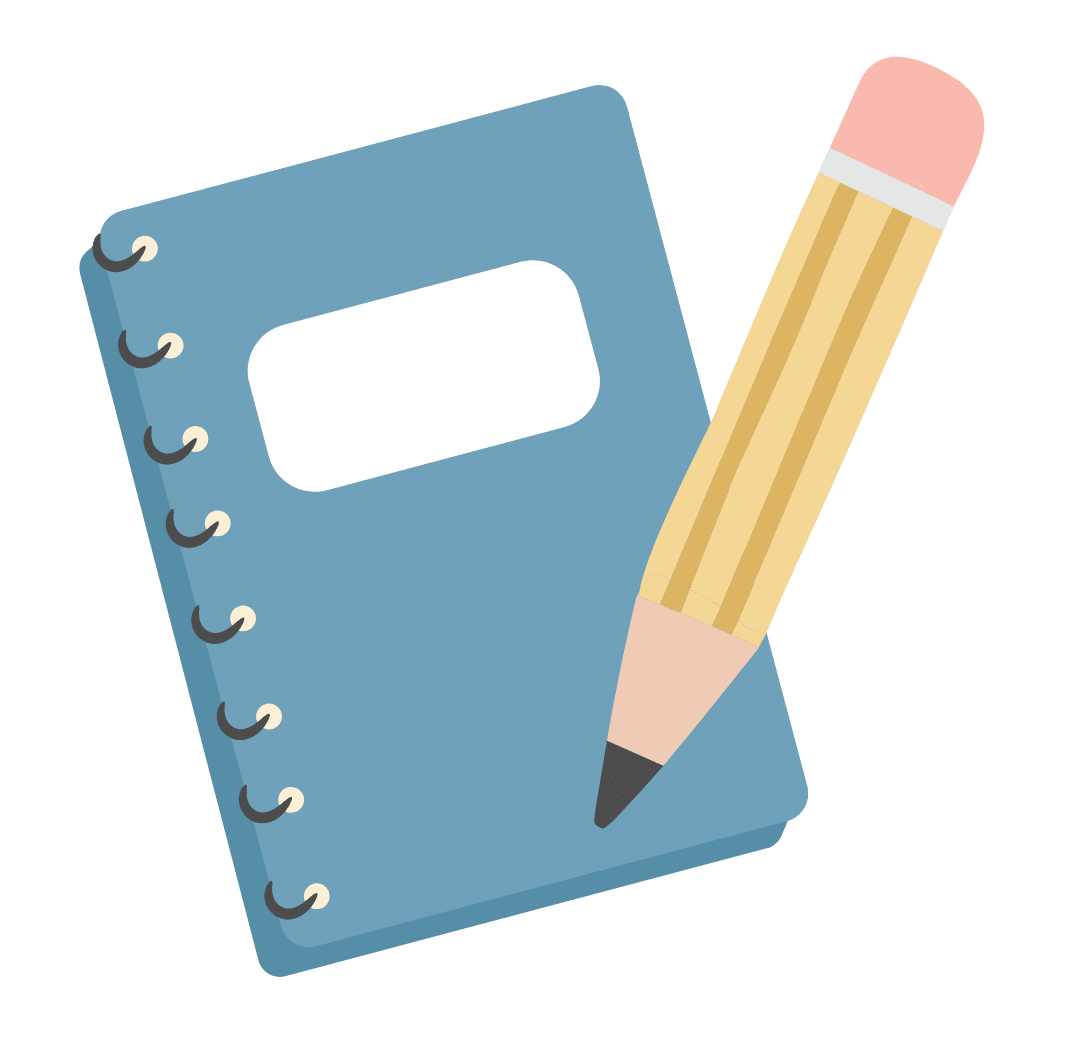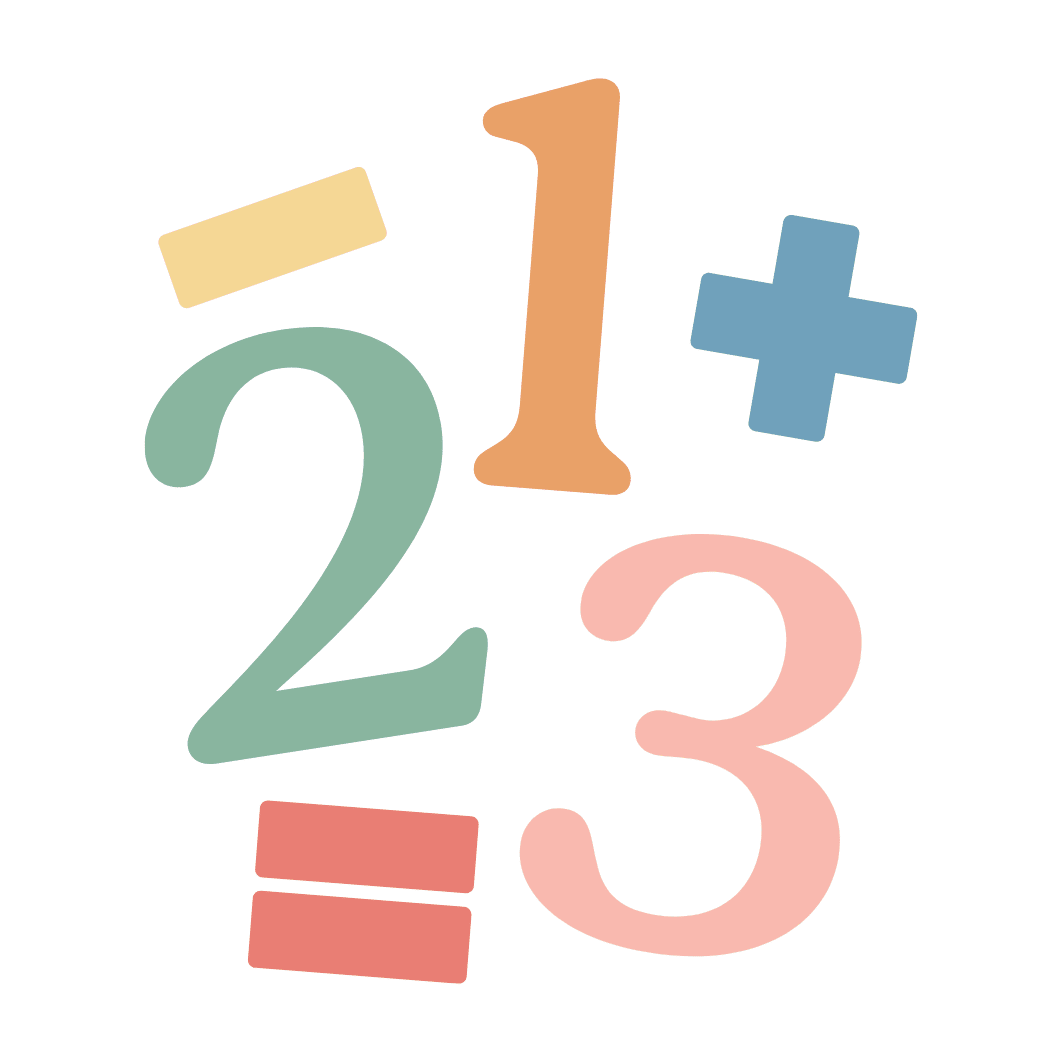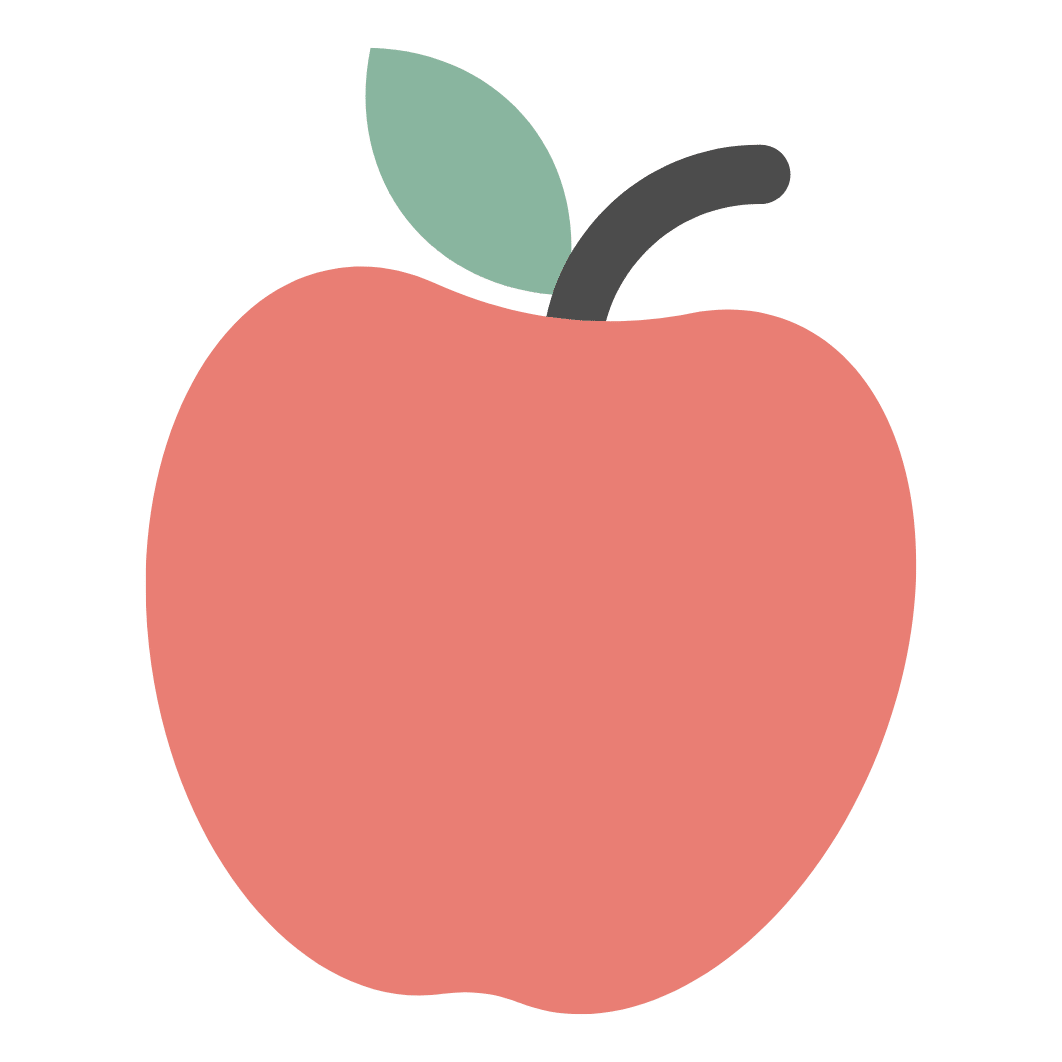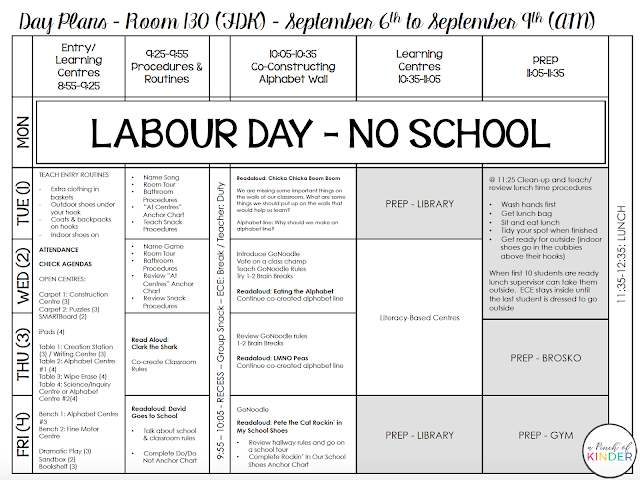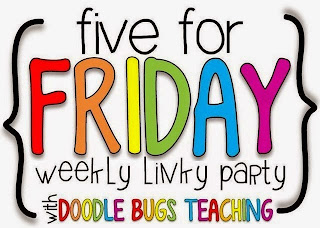What I Do: First Day & Week of FDK
Lego Centre:
Play Dough Centre:
These alphabet play dough mats can be found in my TPT store here.
Writing Centre & Creation Station:
My linking chart can be found in my Step by Step: Kindergarten Writing Plans unit here.
Some other centres I open on the first day are: blocks/building, puzzles, whiteboards & dry erase markers, dramatic play (with minimal furniture and props), bookshelf, iPads and sandbox.
If you want to see more centre examples from Learning Centres #1 you can check out my these blog posts:
At the end of centres I say “Hands on top, that means stop” and have the students stop and put their hands on their heads. Then I say “When I say go, please put centres away and come to the carpet, go!” We then go around and show students where to put items away.
Once most students have made their way to the carpet, I sing this song to reinforce carpet rules:
Carpet Song
(to the tune of Frère Jacques)
Are you criss-cross?
Are you criss-cross?
Eyes on me.
Eyes on me.
Hands in your lap.
Hands in your lap.
Quietly.
Quietly.
Then I add:
I like the way that ________ is sitting,
________ is sitting, ________ is sitting.
I like the way that ________ is sitting,
Oh so very quietly!
(fill in names of students who are modeling great carpet behaviour in the blanks)
You can grab the stop/go templates for FREE here.
>> Snack: 15 min. <<
In our class, I pick a couple of students at a time to line up in a straight line and remind them to wash their hands in the sink and dry their hands on the towel. Then we ask them to go and get their lunch bags and sit at a table. I don’t assign seats so they can sit wherever there is a chair at a table.
I set a large timer for 10 minutes. I love this timer because the kids can see the red part getting smaller as the time gets less and less. If they are done snack and the timer hasn’t gone yet they are asked to put their snacks away, make sure the spot they were sitting at is clean (I have 2 mini brooms and dust pans they can use to clean up their space if needed) and then pick a book from the bookshelf and read on the carpet until the timer goes.
When the timer goes I have students put their books and snacks away and come to the carpet.
>> DPA: 10 min. <<
I introduce GoNoodle and I have a student who is sitting nicely come up and pick a song. While that student is choosing a song, I remind all students to be looking at the screen and thinking of what song they might like to choose in case they are chosen next.
We do 2-3 GoNoodle dances. I review GoNoodle rules as needed after each song (stay in your space, hands to yourself etc). My partner usually supervises GoNoodle while I set up the next set of learning centres.
>> Carpet Time #2 : 20 min. <<
We get going on creating our co-created alphabet line from the first day! This is what we did last year and what we are planning to do again this year.
I start with talking about how we are missing some important things on the walls in our classroom. What are some things we should put up on the walls that would help us with our learning at school? I have the kids share what they think and we talk about the importance of an alphabet line and how it helps us with our learning (it helps us learn our letters/sounds, it helps us know the order of the letters etc.) Then I show them the plan I have in mind (the picture above).
Then I say “We need to brainstorm some things that start with each letter so we can take a picture for each letter with things/actions or people that start with that letter!” Then we start brainstorming for each letter. First we add all of the students names under each corresponding letter. Then I have them tell me any item they want to see in our co-created alphabet line and what letter it begins with (if they can).
We continue this for a few more days until all of the letters have at least 3-4 things.
>> Learning Centres #2: 30 min. <<
We review our “At Centres” anchor chart quickly and students are invited to explore simple centres again. We mix in literacy-based centres in the morning. We circulate and talk to the students, help wanderers find centres and if I have time I pull kids and take head shots so that I have photos to use to make name cards for the word wall
and to add to the cover of their writing portfolio’s.
FREE name card templates can be downloaded here.
The templates for writing portfolio’s can be found here.
>> Prep: 30 min <<
Last year I had a prep period every day at this time but if not I would continue centres until lunch. Be sure to tidy up at least 10 minutes before lunch and review lunch time rules and routines (both for while they are eating and for playing outside)!
>> Lunch & Lunch Recess: 60 min <<
Eat lunch! But also remember to do any important first day routines. At my last school parents filled in dismissal forms after they dropped their child off and we had to pick them up from the division chair and go through them quickly to familiarize ourselves with dismissal permissions. Touch base with your teammates if you have any too, they will remind you of any important first day procedures you may have forgotten!
>> Entry / Book Box / Carpet Time #3: 30 min. <<
As students come in, I remind them of entry routines and invite them to grab their book box. This is a good way to see who can recognize their name. Have them sit on the carpet and read/look at their books quietly until everyone is reading from their book box. I keep this super short on the first day and have even done a story from Storylineonline.net instead (I highly recommend this site for indoor recesses too!) when we had staggered entry (the SK’s came in the morning and JK’s joined in the afternoon) so that the kids were engaged while we were helping the new friends that just joined.
You can grab my FREE editable book box labels here or by clicking on the image below:
>> Learning Centres: 75 min. <<
Especially if you have any new students joining in the afternoon, review the “At Centres” anchor chart. Quickly introduce the afternoon centres. I mix in numeracy based centres in the afternoon. Then we choose a few friends at a time to pick a centre until everyone has picked somewhere to start.
Here are some centres I put out in the afternoon on the first day:
A Number Provocation:
Once everyone has picked a space to start in and are playing at centres, I pull any kids that I didn’t get a picture of in the morning and small groups to do their September writing piece (only if I can!).
You can download this first guided writing sheet by clicking here or on the image below (September to 2025 is included in the file.)
This will be going up on our writing wall as our first piece of writing and it helps me see who can write their name independently. I make note on my clipboard who can recognize their name, who can copy their name, who can recognize letters in their name etc. so that I can make name bags for students who need more practice with their name. These name bags will be our first guided literacy groups eventually.
You can grab name bag printables from my TPT store for FREE here.
We have a snack table in the afternoon so students are invited to eat at that table when they feel hungry. For the first week or so I stop and ask students who have not yet eaten to go to the snack table about 15 minutes before centre time is over, to make sure that they eat what their parents sent with them and to remind the kids to eat.
>> Carpet Time #3: 30 min. <<
Have students practice clean-up routines and come to the carpet. If you have time, have students share what their favourite thing from the day was. Then talk about dismissal routines and outdoor play rules. Make sure you are specific and clear about what is and isn’t allowed so the students know the expectations before you get outside!
>> Outdoor Play & Dismissal: 30 min. <<
Get ready to pack up and go outside. I have a bin with their agendas/zippys so I pull them out one at a time and call the student to get ready. Remind them to show their agenda/zippy to their parents when they get home and bring it back to school every day. Be sure also to tell students where you want them to line up after they are ready too!
Once all students are ready, review the outdoor rules one last time. Tell students where to put their backpacks when they get outside. Also review what to do when the bell rings. I have students put their backpack in a line by our gate and then come to their backpack and get back in line when the bell rings. I remind students that it will take a little longer on the first day because I am still learning their parents and to wait until I call them to come to the front to be released. Remind them that they must wait until you call them so that I know they have been picked up by a safe adult and how important that is. I show them my dismissal clipboard and tell them I check each student off as they leave to make sure everyone left safely and if they leave out another gate without letting me or my partner know I would think they are missing! The kids seem to get it when we tell them why we don’t want them leaving through another gate, especially without telling us first, when you tell them why it’s so important.
Also, make sure you check what the dismissal rules are at your school is as well. Can you let them go 5 minutes early if the parents want to take them early? Some schools are very strict about not letting anyone out before the bell unless they are signed out at the office. Check these things before the first day so you know what the rules are and can explain to parents that it is a school wide rule!
We have all walkers so we get out early and let the kids play. As the parents arrive we make sure to go and greet them so that we can learn who the parents/pick-up people are for each child. When the bell rings, students line up at their backpacks and I call one student at a time to meet their pick-up person. Once everyone is picked up you can go back into the classroom!
Phew! That was a lot. There is so much to remember to do on the first day. People often say if the kids all come, have fun and leave safely at the end of the day it is a first day win and it is so true. Don’t stress too much about your centres or any guided work you wanted to do. Always focus on the rules, routines and procedures and only get to the the guided work (like the September writing page I mentioned) if you have time!
The rest of the week is much of the same so I’m just going to post my week plans from last year, in case you want to take a look. You can download it by clicking here or on the image below. If I had previously written a blog post about an activity I have linked it in the PDF. If you open the PDF and hover your mouse over the page you will see the clicker change into a little hand where there are links on the page.
Kelso’s Choices is a social-problem solving program that the school’s I have been at have used since my first year of teaching. It introduces a lot of Kindergarten friendly ways to solve social problems independently. You can learn more by going to their website: http://kelsoschoice.com
I hope you find this helpful and it gives you some ideas on what to do on the first day of school/week.
Good luck on the first day!
– Yukari


